We sincerely hope that you completely enjoy reading this article on Breathtaking Asian Species. We certainly enjoyed creating it for you. Every corner of the globe boasts marvelous and incredible forms of life. So here, we will break it down to a select few from this particular region only.
Certainly, all life in this world qualifies as important, as well as beautiful, each in its own unique way. Here we’ve merely attempted to list only a miniscule portion of those that many people consider the most amazing in this part of the world. Sit back and enjoy discovering these wonders.
Chinese Lantern
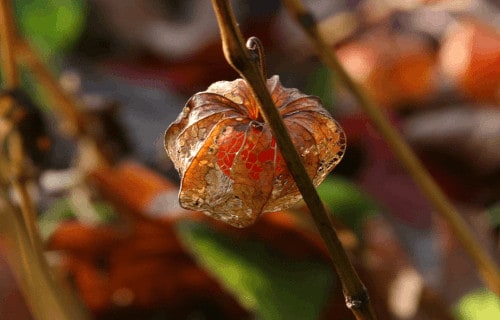
CC: https://bit.ly/1E6HPMf
Chinese Lantern Facts
- Heading off our roster of Breathtaking Asian Species is the delicate and mesmerizing beauty, the Chinese Lantern.
- It also represents a relative of the aptly named deadly nightshade plant, Atropa Belladonna.
- The plant is easily recognizable by the unique wispy thin coverings on its fruit which varies in color. They resemble popular lanterns in China, thus the common name.
- It has become a popular ornamental species due to its bright colors and distinctive appearance which easily sets it apart.
- Furthermore, various parts of the plant contain chemicals useful in medicines.
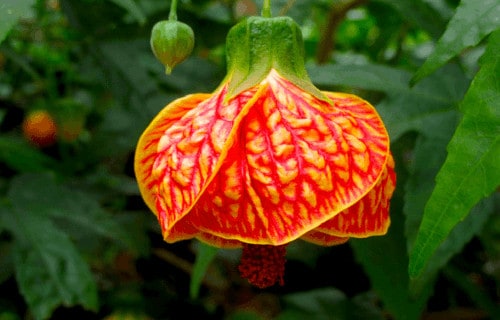
CCL: https://bit.ly/1xMszCg
Chinese Lantern Physical Description
Firstly, the Chinese Lantern is a herbaceous perennial and grows in an upright clump. Each plant averages roughly 24 in (61 cm) in both height and width.
The dark green leaves are abundant and are about 3 in (7.5 cm) long. The white flowers develop small and sparse in number, and the lacy covering over the fruit serves as a protective layer.
These remain small, attaining an average diameter of about 0.6 in (15 mm). The fruit is edible but rather tasteless.
The quite distinctive covering forms over the fruit of the Chinese Lantern as the fruit ripens during the later part of summer.
- Kingdom: Plantae
- Phylum: Angiosperms
- Class: Eudicots
- Order: Solanales
- Family: Solanaceae
- Genus: Physalis
- Species: P. alkekengi
Chinese Lantern Distribution, Habitat, and Ecology
Most notably, the gorgeous Chinese Lantern evolved as endemic to a large range extending all the way from Japan to southern Europe.
Within its native range, it prefers a specific habitat type consisting of hedgerows and along damp paths. It commonly inhabits altitudes ranging from the plains to the lower slopes of mountains
As pretty as it looks, the plant can also be invasive. The roots spread great distances which may produce new shoots at great distances from the original plant.
In spite of its beauty and use in medicines, care should be taken with the plant. Except for the fruit itself, all parts of the lovely plant remain toxic.
Vietnamese Mossy Frog
Vietnamese Mossy Frog Facts
- Second on our list of Breathtaking Asian Species, the astonishing Vietnamese Mossy Frog looks like something out of a child’s vivid imagination, right?
- Not surprisingly, this truly extraordinarily unique looking frog constitutes a highly specialized species of amphibian
- Anywhere else in the world besides its specific native region, this unique variety of animal would stand out. In its natural habitat, however, it remains practically invisible when it wishes to be, which is most of the time.
Vietnamese Mossy Frog Physical Description
The amazing Vietnamese Mossy Frog derives its common name from its physical resemblance to a clump of moss.
The skin generally shows green, with various colored spots and markings. Its skin also has a covering of numerous protrusions and tubercles, providing excellent camouflage.
In addition, this incredible amphibian attains a maximum known overall length of about 3.5 in (8.9 cm).
The Vietnamese Mossy Frog displays a slight degree of sexual dimorphism, with the females being slightly larger than the males of the species.
- Kingdom: Animalia
- Phylum: Chordata
- Class: Amphibia
- Order: Anura
- Family: Rhacophoridae
- Genus: Theloderma
- Species: T. corticale
Vietnamese Mossy Frog Distribution, Habitat, and Ecology
Quite sadly for Nature lovers, the animal only exists in portions of northern Vietnam, in Asia.
This uniquely adapted species also formed semi-aquatic in nature and obviously highly adapted for camouflage in its environment.
Its habitat requirements appear to be highly specific. It has only been seen on the banks of mountain streams, at elevations of approximately 3,000 ft (9.842 ft), or in flooded caves.
This unique animal is nocturnal. Diet-wise, it is insectivorous and its primary prey consists of locust, crickets, cockroaches, moths, and flies.
Diving Bell Spider
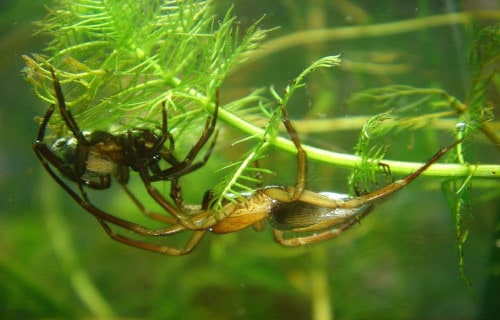
CCL: http://bit.ly/2REt4fw
Diving Bell Spider Facts
- Next on our list of Breathtaking Asian Species comes the true one-of-a-kind arachnid, the Diving Bell Spider.
- This astounding species is currently the only known arachnid to spend its life nearly completely under the water: it only surfaces to refresh its supply of air and to occasionally bring prey to the surface.
- Its bite does not appear to pose a serious threat to humans but is rather painful.
- At the moment, its numbers appear to be stable, and its habitat range remains sufficient. Hence, the IUCN does not currently have a classification for this spider.
Diving Bell Spider Physical Description
Firstly, the surprising Diving Bell Spider displays an unusual form of sexual dimorphism for an arachnid. In most related species, the female grows the largest. But in the case of this distinctive creature, the male does so.
Males also have an overall head and body length averaging 0.4 – 0.6 in (10 – 15 mm), whereas females only measure 0.31 – 0.47 in (8 – 12 mm).
The coloring of this arthropod varies, though slightly, among individuals, ranging from light to extremely dark brown.
- Kingdom: Animalia
- Phylum: Arthropoda
- Class: Arachnida
- Order: Araneae
- Family: Dictynidae
- Genus: Argyroneta
- Species: A. aquatica
Diving Bell Spider Distribution, Habitat, and Ecology
The native habitat of the spider includes much of mainland Europe and parts of Asia. Within that range, it lives exclusively in freshwater habitats with an abundance of various aquatic plants.
This typically includes such areas as ponds, canals, lakes, marshes, and also slow-moving streams across its range. The animal manages to live underwater by constructing a ingenious airtight structure from the silk it produces in its own body.
Further, the female spends the great majority of her life in her bubble, usually only emerging to refresh its air supply or feed.
Its prey usually consists of small insects and crustaceans. In turn, it itself most commonly falls prey to fish and frogs.
Javan Rusa
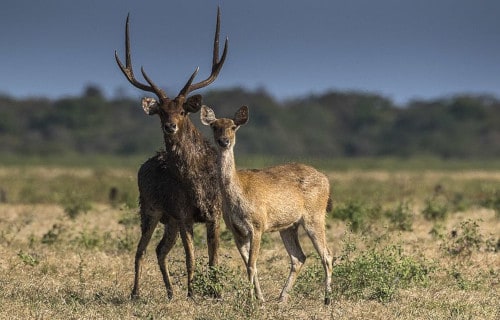
CCL: http://bit.ly/2xLZ0ap
Javan Rusa Facts
- Listing as fourth on our roll call of Breathtaking Asian Species is the majestic Javan Rusa.
- The unique and impressive animal has an extremely restricted endemic habitat range but humans have also introduced it into a widespread portion of the Southern Hemisphere.
- Given its limited natural habitat range, as well as other factors, the IUCN has listed the animal as Vulnerable.
- Sadly, this remarkable mammal also now faces the same other threats to its existence that many species do: climate change and habitat loss.
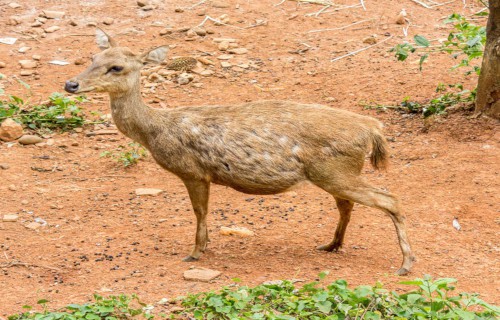
CCL: http://bit.ly/2IjEG4n
Javan Rusa Physical Description
The beautiful Javan Rusa displays a quite noticeable degree of sexual dimorphism, just as virtually all related species do.
Males attain a significantly larger size than females, averaging a head-to-body length of about 6.1 ft (1.86 m), compared to 4.7 ft (1.44 m) for females. In addition, the males develop a stockier build, attaining an average weight of roughly 353 lb (160 kg), whereas females average 163 lb (74 kg).
In coloring, the pelage of this wonderful mammal tends to displays a shade of grayish-brown and usually appears quite coarse in texture.
Uniquely, however, the ears remain its most distinguishing feature, being among the largest of related species in relation to body size.
- Kingdom: Animalia
- Phylum: Chordata
- Class: Mammalia
- Order: Artiodactyla
- Family: Cervidae
- Genus: Rusa
- Species: R. timorensis

CCL: http://bit.ly/2xLZ0ap
Javan Rusa Distribution, Habitat, and Ecology
Firstly, the magnificent Javan Rusa evolved as endemic solely to the islands of Timor, Bali, and Java, in Indonesia, in Asia.
However, humans have introduced to dozens of other islands throughout the region, as well as Australia. Fortunately for it, the Javan Rusa has proven itself to be adaptable, inhabiting savannas, deciduous forests, and even parklands.
As a herbivore, it feeds primarily on a variety of leaves, fruit, and grasses, and does not drink water at all (!), acquiring all its water from its food.
The natural predators of this amazing creature include the dhole, the Javan leopard, pythons, crocodiles, and even the Komodo Dragon.
Finally, this deer, like most related species, lives as a social animal, with individuals rarely being spotted alone.
Draco Volans
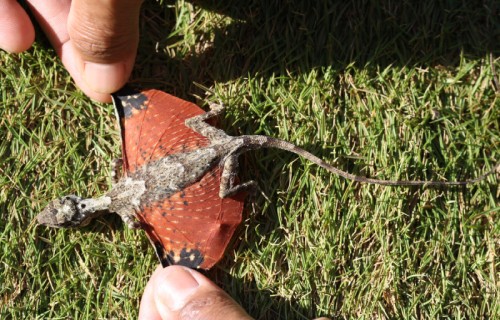
CCL: http://bit.ly/2QZT99x
Draco Volans Facts
- The fifth entry on our list of Breathtaking Asian Species is the truly astounding reptile, the Draco Volans.
- After seeing this incredible creature, one might think that dragons are real. This particular dragon, however, doesn’t breathe fire just yet so it’s not quite as dramatic as the dragons in Game of Thrones.
- Just like the Marine Iguana, this little dragon must be a relative of Khaleesi’s children.
- Draco Volans constitutes a species of lizard native to portions of Southeast Asia. Though it is incapable of true flight, it does have the ability to glide between the trees for as much as 26 ft (8 m).
- It feeds as an insectivorous creature, mainly consuming termites and ants. Though long known to the local inhabitants of its native range, the Draco Volans was not classified scientifically until 1758.
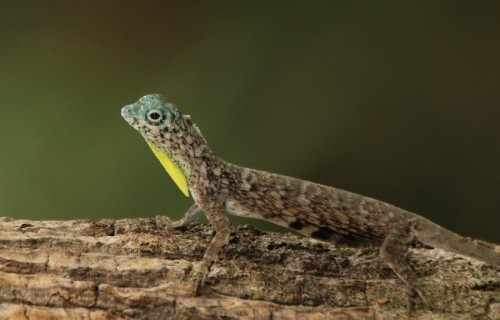
CCL: http://bit.ly/2zBWbKi
Draco Volans Physical Description
Despite its fearsome appearance, the Draco Volans’ size is tiny with an average length of about 12 in (30 cm).
In color, its body principally displays brown and grows elongated in form. The head is comparatively blunt-shaped.
The underside of the wings (though not technically true wings), however, is a combination of blue and yellow. The wingspan is usually about 3/4 the length of the body. When not in use, the flaps of skin it uses to glide are kept folded against the body.
A slight degree of sexual dimorphism is present, with females slightly larger in size than males.
- Kingdom: Animalia
- Phylum: Chordata
- Class: Reptilia
- Order: Squamata
- Family: Agamidae
- Genus: Draco
- Species: D. volans
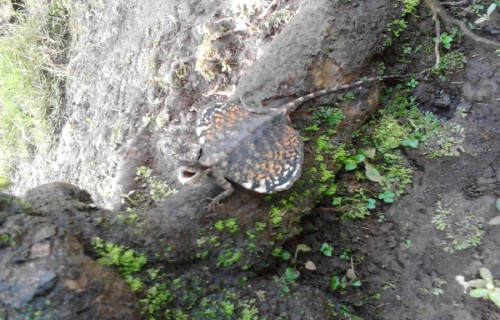
CCL: http://bit.ly/2zBWbKi
Draco Volans Distribution, Habitat, and Ecology
The lizard inhabits remote regions of Indonesia, Malaysia, and the Philippines. Within that area, individuals live almost exclusively in regions of the tropical forest.
The Draco Volans is highly territorial by nature. A male will claim 2-3 trees as his territory, with 1-3 females inhabiting each tree (his own little harem).
After mating, the female will descend to the floor of the forest, and lay 1-5 eggs. These she buries in the loose soil.
Though the eggs take 1-2 weeks to hatch, the female will only guard them for a few days at most. Even after hatching, the female attends to the young only occasionally (not the best of mothers).
White Egret Orchid
White Egret Orchid Facts
- The sixth item on our list of Breathtaking Asian Species is the fantastic beauty, the White Egret Orchid.
- This stunning flower’s common name derives from its supposed resemblance to a white egret as its shape suggests the appearance of white wings spread for flight.
- Such a unique plant also perfectly demonstrates the creativity of Nature. Its scientific classification (Habenaria radiata) is appropriate since it appears to radiate beauty.
- The delicate flower is very rare in the wild and is even the subject of several legends within its endemic range.
White Egret Orchid Physical Description
The orchid is terrestrial and plants itself is a small shrub which attains a usual height of about 15 in (38 cm).
Its leaves grow long and thin, like blades of grass. Typically, two or three flowers are produced on each short stem. However, these may number as many as eight.
The calyx is generally egg-shaped, while the sepals are small and green. Most noteworthy, though, are the three lobes. The two largest extend laterally and develop highly fringed edges, which serves to further accentuate the appearance of wings.
- Kingdom: Plantae
- Phylum: Angiosperms
- Class: Monocots
- Order: Asparagales
- Family: Orchidaceae
- Genus: Pecteilis
- Species: P. radiata
White Egret Orchid Distribution, Habitat, and Ecology
Firstly, the stunning White Egret Orchid evolved as endemic to scattered portions of Asia, including Japan, China, Korea, and Russia.
Not surprisingly, the species requires a highly specific habitat type – it grows naturally in seepage slopes and wetland regions. Interestingly, it only occurs at moderate to high elevations which is unusual for orchids.
The White Egret Orchid matures during the summer and rainy season. Because of this, it tends to bloom from July to August. During Autumn, it enters a period of dormancy.
Finally, the species appears to be in rapid decline in the wild. Yet, the IUCN has not yet given the species a classification status.
Mandarin Duck
Mandarin Duck Facts
- Our next Breathtaking Asian Species is the absolutely incredible bird, the Mandarin Duck which bears a close relationship to the wood duck of North America.
- The unique animal now lists as Threatened with the IUCN in its endemic range because of habitat loss (destruction of native forests).
- However, and in this instance, for once, thankfully, mankind introduced it to many other portions of the world.
- The Mandarin Duck also constitutes a species of perching duck. Individuals spend the majority of the time during the day perching (hence the term) in trees or on the ground.
- Though not hunted for food, its beauty, is a curse since collectors often hunt the magnificent avian.
Mandarin Duck Physical Description
Experts consider the Mandarin Duck a medium-sized duck, proving that beauty comes in all sizes. It attains an average length of nearly 19 in (49 cm) and its wingspan averages roughly 30 in (75 cm).
Sexual dimorphism appears in this species via coloring. The females typically present brown on the back and wings, and white beneath. By contrast, the males display brilliantly colored combinations of red, blue, white, orange, and purple, and even the beak shines a bright red.
However, the male does resemble the female’s coloring while it molts. Both genders display a crest though that of the male stays far more pronounced.
- Kingdom: Animalia
- Phylum: Chordata
- Class: Aves
- Order: Anseriformes
- Family: Anatidae
- Genus: Aix
- Species: A. galericulata
Mandarin Duck Distribution, Habitat, and Ecology
Most notably, the Mandarin Duck evolved as endemic to portions of East Asia, including widely scattered parts of China, Russia, and Japan.
Now, however, it has small populations in England, Ireland, Germany, and the United States.
It generally prefers to inhabit densely wooded regions near ponds, marshes, or shallow lakes. The creature also most commonly prefers lower altitudes, but may occasionally be found at altitudes of as much as 4,900 ft (1,500 m).
This animal typically feeds feed at dawn and dusk, with its principal diet consisting of seeds, insects, snails, nuts, worms, and small fish.
Finally, females make nests near water, laying 9-12 eggs. The male will protect the nest and eggs but does not assist in their incubation.
King Cobra
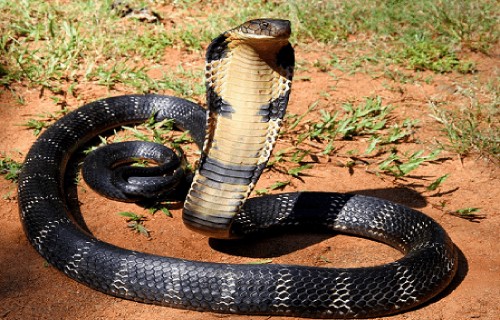
King Cobra Facts
- Next on our list of Breathtaking Asian Species is the impressive, and often feared and maligned, reptile known as the King Cobra
- Quite notably, it remains the longest known species of venomous snake ever discovered by modern man. Despite its great length, however, it remains rather surprisingly light.
- The name is rather deceptive since it is not a true cobra. The reptile actually forms the sole member of its own distinct genus, with no other known species even coming close.
- This snake is extremely dangerous due to the combination of the toxicity of its venom, and the sheer quantity of venom produced.

CCL: http://bit.ly/2zBWbKi
King Cobra Physical Description
The beautiful and deadly King Cobra averages about 13 ft (4 m) in length. Exceptional individuals sometimes attain a length of a much as 18.5 ft (5.6 m). This reptile usually weighs no more than 13 lb (6 kg). The heaviest King Cobra on record weighed 26 lb (12 kg).
In color, the reptile is typically either an olive-green, tan or black, with yellow bands crossing their body along its length.
The relative toxicity of its venom measures high but is by no means the highest. The greatest danger lies in the sheer amount of venom that individuals are capable of injecting working in conjunction with that level of toxicity.
- Kingdom: Animalia
- Phylum: Chordata
- Class: Reptilia
- Order: Squamata
- Family: Elapidae
- Genus: Ophiophagus
- Species: O. hannah
King Cobra Distribution, Habitat, and Ecology
The King Cobra evolved as endemic to the forest regions of Southeast Asia including India, Indonesia, and the Philippines. Individuals tend to prefer to inhabit dense highland forests.
It primarily preys on other snakes, but will consume small invertebrates as well. The King Cobra is classified as diurnal, and primarily hunts during the day and remains concealed at night.
This reptile is not typically aggressive unless provoked. When provoked, it will raise as much as one-third of its body length into the air and will then also flatten its head in preparation to strike.
This species remains capable of delivering multiple envenomings in a single attack.
Finally, this snake will live an average of about 20 years.
Bharal

CCL: https://bit.ly/1xMszCg
Bharal Facts
- The ninth entry on our listing of Breathtaking Asian Species is the little-known but nevertheless quite remarkable Bharal.
- This astonishing animal lives in an extremely rugged and remote section of Asia. So remote is its habitat range, that few outsiders ever see this amazing creature.
- The mamma has been little-studied. In fact, the first serious scientific observations of this ruminant did not occur until 1973.
- Previously, this fascinating recluse of Nature had been thought to be a variety of sheep. However, recent DNA analysis reveals a much closer relationship to goats.
- Interestingly, this species has long enjoyed a special relationship with the occupants of numerous Buddhist monasteries in its endemic range, who often protected the creatures.
- Sadly, concerns over Bharal-related crop damage have begun to arise in portions of its native range, putting pressure on those who strive to protect it.
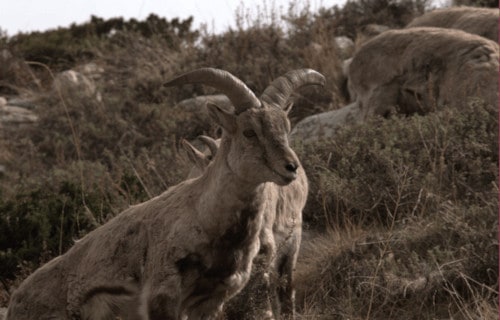
CCL: https://bit.ly/1ryPA8o
Bharal Physical Description
The beautiful Bharal ranks as a medium-sized form of caprid, which is a type of ruminant. This animal displays sexual dimorphism, but only a slight degree. The males grow only slightly larger and heavier than the females.
Overall, it attains an average head and body length of roughly 65 in (165 cm). The short, stubby tail adds, at most, an additional 7.9 in (20 cm) to its length.
The largest individual observed to date measured 36 in (91 cm) tall at the shoulder. Most individuals remain significantly smaller than this.
The Bharal coat grows short and dense. It also displays a slate gray color, commonly with a bluish sheen. The belly and part of the legs present a white color, while the chest and front of the legs usually show black.
Quite surprisingly, both genders grow horns. In males, these grow to lengths of as much as 31 in (80 cm), while those of the female rarely exceed 8 in (20.3 cm).
- Kingdom: Animalia
- Phylum: Chordata
- Class: Mammalia
- Order: Artiodactyla
- Family: Bovidae
- Genus: Pseudois
- Species: P. nayaur
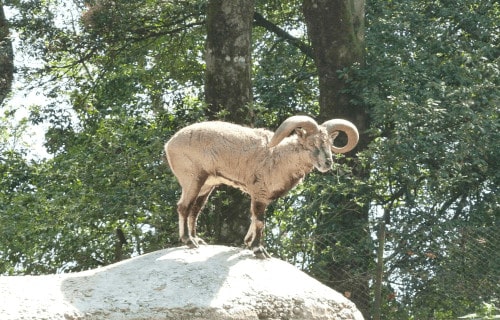
CCL: https://bit.ly/1p2b8Ke
Bharal Distribution, Habitat, and Ecology
The stunning Bharal evolved as native to a harsh and restricted portion of Asia in a range of what we now know as India, Bhutan, Nepal, Pakistan, and Tibet.
Within that range, it only likes a very specific type of habitat: high mountain slopes that contain numerous rocky cliffs and ledges. These, the Bharal uses both for camouflage and defense. Its natural coloring allows it to blend in quite well with the color of the native stone, providing protection from predators.
In addition, the Bharal rarely strays more than 650 ft (200 m) from the ledges and cliffs. Its surefooted nature usually allows it to escape attacking predators by leaping onto tiny ledges.
Its most common predators include the magnificentSnow Leopard. However, it also falls prey to human hunters.
Despite this practice, its numbers appear stable for the moment. For this reason, the IUCN currently classifies it as a Species of Least Concern.
Its main threat actually consists of competition from livestock for available food sources.
Skeleton Flower
Skeleton Flower Facts
- This next entry on our list of Breathtaking Asian Species, the awesome Skeleton Flower, proves just how resourceful Nature can be.
- The flower, also known as Diphylleia grayi, represents a fascinating and extraordinary plant genus.
- Due to the unique chemical composition of its pigmentation, an incredible transformation occurs when the petals become wet. The already delicate-seeming petals become almost completely transparent.
- Once these completely dry, however, the petals of the Skeleton Flower once again regain their original coloring, completing the breathtaking transformation.
Skeleton Flower Physical Description
The truly amazing Skeleton Flower evolved as a deciduous perennial and dies in winter. Also, it has large, umbrella-shaped leaves which tends to appear topped with clusters of the unique blooms.
Furthermore, in summer, the petals fall and Nature replaces them with bright blue colored berries, that appear in great abundance.
The visually stunning angiosperm generally attains a height of about 15.75 in (40 cm) and a width of just over 3 ft (1 m) across.
- Kingdom: Plantae
- Phylum: Angiosperms
- Class: Eudicots
- Order: Ranunculales
- Family: Berberidaceae
- Genus: Diphylleia
- Species: D. grayi
Skeleton Flower Distribution, Habitat, and Ecology
The flower evolved as endemic solely to a specific portion of Asia. Within that region, it primarily grows naturally in the colder regions of what now constitutes China and Japan.
However, in what amounts to an incredible mystery, the genus also appears in isolated portions of the Appalachian Mountains of the United States, in North America. How did that happen?
For its preferred habitat, the Skeleton Flower primarily appears in regions consisting of moist, wooded mountain regions.
Tis truly visually distinctive and remarkable species blooms in the later portions of spring, and through early summer. Besides, it remains quite sensitive to sunlight, and, in fact, flourishes best in shaded areas, with little or no direct sun.
Creatonotos gangis
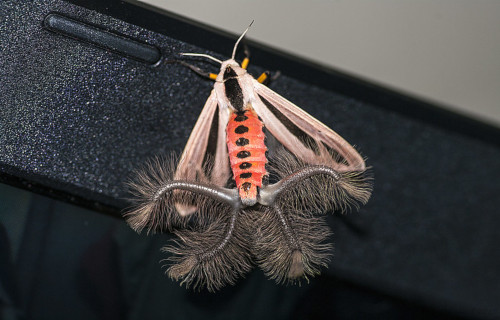
CCL: https://bit.ly/2Cvf1Uh
Creatonotos gangis Facts
- The eleventh selection for inclusion in the compilation of Breathtaking Asian Species is the visually astonishing Creatonotos gangis.
- Perhaps most notably, the truly astonishing insect remains one of the most visually distinctive Lepidoptera known to man. Unfortunately, the remarkable insect also has no generally accepted common name.
- While it may be unknown to many, the incredible moth inhabits a moderately extensive range. Due to this unfortunate fact, along with an apparently stable population base, the IUCN currently has no listing for the insect.
- Furthermore, while the adults remain completely harmless, the same does not hold true for the caterpillar form. In fact, this life stage of the surprising invertebrate often causes severe damage to pomegranate crops.
- Sadly, however, this could potentially change in the very near future. This lamentable fact occurs for the same reason it does for numerous other species, because of the continued progression of climate change.
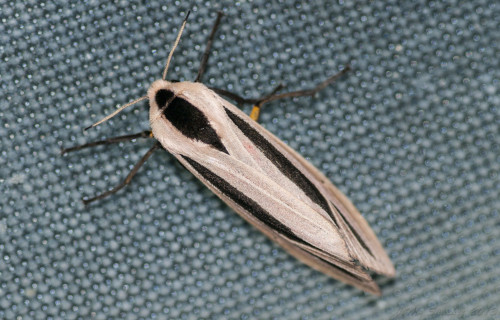
CCL: https://bit.ly/2Q0vSWY
Creatonots gangis Physical Description
Firstly, despite its astounding appearance, the remarkable Creatonotos gangis remains a physically moderately small type of moth. The fascinating species does display sexual dimorphism, however, but it does so in a highly unusual manner.
Secondly, because of this, both genders attain the same approximate physical size. As a result, mature adults attain an average wingspan of about 1.6 in (4 cm). In addition, both sexes develop brown forewings and white hindwings. Also, both possess a dark streak on each wing, and usually a red abdomen, though yellow does occur.
However, the most startling physical attribute, and the source of the physical difference, belongs to the males of the species. That’s because each male has four large, extendable scent organs. When fully extended, these can even be longer than the body itself.
- Kingdom: Animalia
- Phylum: Arthropoda
- Class: Insecta
- Order: Lepidoptera
- Family: Erebidae
- Genus: Creatonotos
- Species: C. gangis
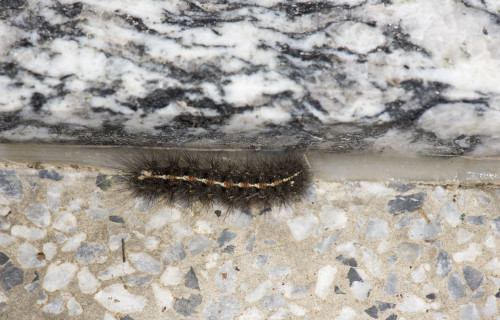
CCL: https://bit.ly/2PZuELs
Creatonotos Distribution, Habitat, and Ecology
First of all, the unique and rather fascinating Creatonotos gangis inhabits a range that includes parts of southeast Asia and Australia. In Asia, this includes parts of a total of seven countries. But, in Australia, this includes Queensland, and parts of the western and northern areas.
Also unlike most related creatures, the awesome Creatonotos gangis inhabits a fairly wide range of habitat types. However, it does show a decided preference for regions with an abundance of fruit trees, most especially pomegranates.
Further, the enormous scent glands of the male allow it to attract females from extreme distances. After mating, the female lays large quantities of round, yellow eggs. These most commonly appear in rows on the underside of plant leaves.
Once hatched, the caterpillar form has a voracious appetite. It feeds on numerous species, of course, but apparently prefers pomegranate leaves. Yet it also consumes the foliage of plants such as rice, sweet potatoes, and sorghum in less damaging quantities.
Visayan Spotted Deer
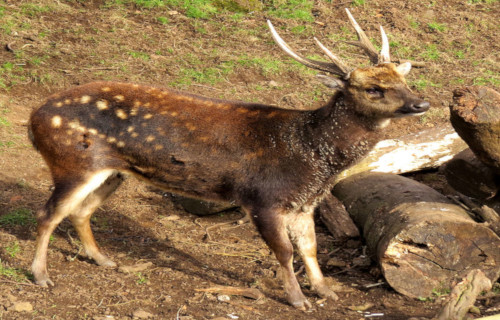
Visayan Spotted Deer Facts
- Placing thirteenth, though only by chance, among our choices of Breathtaking Asian Species is the little-known animal known as the Visayan Spotted Deer.
- Most notably, the remarkable deer remains somewhat of a mystery to researchers. This primarily holds true due to the fact that the animal is rarely ever seen in the wild.
- In 2009, researchers found the first evidence of the existence of the animal in the wild in more than 10 years. Furthermore, it was not until 2012 that the first photographing of it in its native habitat occurred.
- Further, an estimated 2,500 individuals of this amazing animal live in various locations, such as zoos, around the world. However, its wild population appears to be extremely small, and diminishing. Estimates place this number at no ore than 300 individuals.
- Due to its numbers, and the threats it faces, the IUCN lists it as Endangered. Its greatest threat appears to be deforestation. But, hunting by locals, both for meat and for the pet trade, threatens it as well.
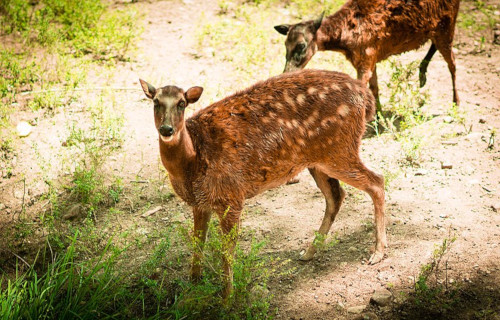
CCL: https://bit.ly/1xMszCg
Visayan Spotted Deer Physical Description
Firstly, the marvelous Visayan Spotted Deer represents a physically small species of its kind. Despite that fact, however, the rare creature nevertheless remains the largest of the three types of deer in its region.
Also, it displays only a slight degree of sexual dimorphism. In its case, the males grow slightly larger than the females. These also develop short, thick antlers. The female, however, does not develop these.
An overall average body length equals between (49 – 51 in 125 – 130 cm). Meanwhile, shoulder height averages roughly 28 – 31 in (70 – 80 cm). But adult weight varies significantly. This runs from 55 – 176 lb (25 – 80 kg).
Finally, its coloring consists of several patterns. The back and sides tend to be dark brown, while the neck and head appear a lighter shade. Further, the stomach usually presents a creamy-white shade. A pattern of beige spots also dots its sides and back.
- Kingdom: Animalia
- Phylum: Chordata
- Class: Mammalia
- Order: Artiodactyla
- Family: Cervidae
- Genus: Rusa
- Species: R. alfredi
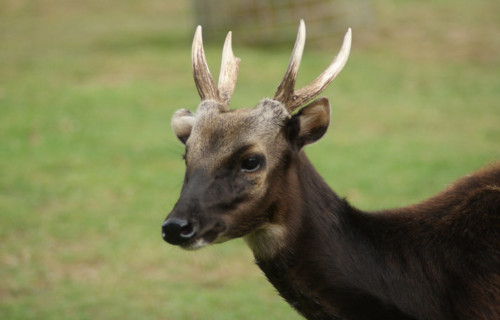
CCL: https://bit.ly/1ryPA8o
Visayan Spotted Deer Distribution, Habitat, and Ecology
The wonderful Visayan Spotted Deer, quite sadly, has an extremely limited natural range. While it once existed on other islands, it now lives in the wild only on two islands These consist of the Visayan islands of Negros and Panay, in the Philippines.
Yet, even there, it lives only in specific portions of the islands. These include sections of forest, and the local grasslands. Additionally, it once lived from the shore to the heights. But now, it only thrives in the higher altitudes, up to 6,561 ft (2,000 m).
Also, like all other known types of deer, the impressive animal evolved as entirely herbivorous in nature. Therefore, its diet typically consists of a limited various buds, grasses, and leaves endemic to the local forest.
It also evolved as primarily nocturnal in nature. As a result, it typically emerges at night to feed in small clearings. In addition, the mammal usually travels in small groups. However, males sometime live solitary lives. Otherwise, researchers know little of its life cycle.
Sangai
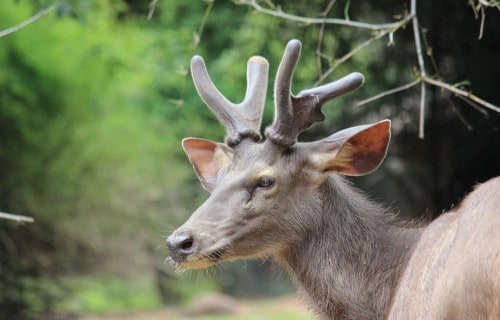
CCL: https://bit.ly/2znnb2A
Sangai Facts
- The next animal appearing in this article about Breathtaking Asian Species is the phenomenal Sangai.
- Firstly, the short and surprisingly simple term for it serves as one of the common names for a subspecies of brown-antlered deer. But, as is the case with many species, this gorgeous mammal also goes by a few other common names.
- To be precise, three terms stand out, in addition to the accepted one. These terms include the dancing deer, Eld’s Deer, and the Manipur brown-antlered deer. However, its scientific name remains the term of Rucervus eldii eldii.
- Even indigenous residents had rarely seen it. But, the first recognition of this amazing creature by a non-native of its region occurred in the year 1838. Lt. Eldi Percy, an assistant political agent, made the initial recognition of the fabulous deer.
- One of the alternate names of the Sangai honors him for that well-deserved recognition. Further, the first acknowledgement of the impressive animal as a member of a newly-recognized species in a scientific publication occurred in 1841.
- Unfortunately, the magnificent Sangai now also finds itself in a highly perilous situation. This occurs due to the facts that it has only a small population, and a highly restricted range. For these reasons, the IUCN now lists the species as Endangered.
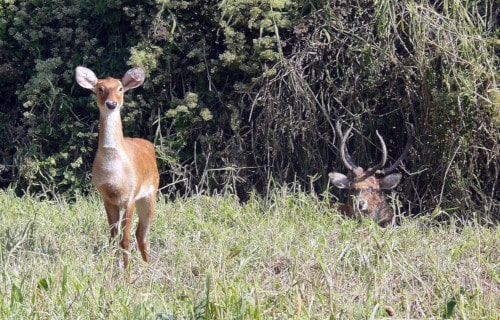
CCL: https://bit.ly/2Y30uLB
Sangai Physical Description
The Sangai also remains an impressive species. But, it does not earn this distinction based on size. In terms of measurements, it ranks as a medium-sized variety of deer. But, like many related species, it displays a respectable degree of the characteristic of sexual dimorphism.
It manifests these in three ways. Firstly, only the males possess antlers. This applies to all types of deer, except for the Reindeer. Secondly, the males attain a slightly greater height at the shoulder than females. Thirdly, the males reach a greater weight than the females.
Both genders display a reddish brown color in winter. This turns lighter in summer. Males average 45.3 – 51 in (115- 130 cm) in height, and 198 – 275 lb (90 – 125 kg) in weight. But females average 35.4 – 39.4 in (90 – 100 cm) in height, and 132 – 176 lb (60 – 80 kg) in weight.
- Kingdom: Animalia
- Phylum: Chordata
- Class: Mammalia
- Order: Artiodactyla
- Family: Cervidae
- Genus: Rucervus
- Species: R. e. eldii
Sangai Distribution, Habitat, and Ecology
The Sangai inhabits an extraordinarily limited area of the world. The creature also appears in a restricted section of Asia. More specifically, though, the remarkably stunning animal only lives in the region on the southeastern shore of Loktak Lake, in India.
But, within this range, the creature has specific needs for its choice of habitat. The mammal also only lives on and around the floating biomass, called phumdi, unique to this area. Fortunately, the entirety of this region now forms part of the Keibul Lamjao National Park.
Quite understandably, the minor size of its habitation area limits its options. The entire park only covers an area of roughly 15.4 sq mi (40 sq km). Yet, the fabulous animal itself only dwells within a portion of this, in an area only covering about half the total area of the park.
This regrettable further restriction occurs given its dependence on the phumdis. Sadly, these plants only appear in this area. Here, the Sangai lives an entirely herbivorous life. It feeds on a variety of local grasses, herbaceous plants, and various roots.
By day, the great majority of individuals generally rest under tall reeds and grasses. Before the enactment of various protective measures, the gorgeous animal nearly became extinct. Now, its numbers have thankfully risen to an estimated 260 individuals.
Rusty-Spotted Cat
Rusty-Spotted Cat Facts
- The 15th entry into this article about Breathtaking Asian Species is one many people remain unaware of, the amazing feline named the Rusty-Spotted Cat.
- The term for this small animal perfectly serves as the common name for this beautiful wild feline. It’s also far more pronounceable than the scientific name for the animal. That’s because that term’s the tongue-twisting name of Prionailurus rubiginosus.
- It’s held several other scientific names , though. The first scientific recognition, and naming, of the animal occurred in 1831, through the efforts of the French zoologist Isidore Geoffroy Saint-Hilaire. Several other proposed names later followed.
- Whichever name one uses for the magnificent mammal, however certain facts stand out about it. The primary one remains the fact that it’s quite a diminutive member of the cat family. In fact, it currently ranks as one of the smallest of all known wild felines.
- Sadly, like many of the species of the world, the Rusty-Spotted Cat now finds itself in peril. Its population numbers appear to be dwindling rapidly, for various reasons. As a result, the IUCN now lists the mammal as Near Threatened on its Red List.
- For the moment, habit loss appears to be the primary factor behind its decline. This occurs mainly due to its native habit being destroyed as part of cultivation efforts by humans. It also, however, now faces the threat of climate change, like other species.
Rusty-Spotted Cat Physical Description
The fabulous Rusty-Spotted Cat elegantly proves the principle that beauty comes in all shapes and sizes. That’s because, by any measure, it’s a small species of feline, despite its great appeal. Nature continually demonstrates its apparent love of variety in its creations.
Like many mammals, though, this remarkable variety of wild cat displays the physiological characteristic of sexual dimorphism. It further follows the pattern of the majority of felines in that this trait primarily manifests itself in terms of sheer physical size.
More precisely, the males attain a greater average body weight than the females. That difference, however, remains comparatively minor. A male reaches an average body weight of roughly 3.75 lb (1.7 kg.) The slightly smaller female, meanwhile, averages about 3.1 lb (1.4 kg).
In terms of overall appearance, though, the genders appear essentially indistinguishable. Typically, the fur develops as quite short, and mainly displays a brownish color across most of the body. It further shows a mild rusty tinge, hence the common name.
The animal does, though, present a different pattern on the throat and the underside of the body. There, the fur develops as a light white. It’s also marked with random dark stripes and spots. Typically, individuals also have four dark stripes extending back from over the eyes.
- Kingdom: Animalia
- Phylum: Chordata
- Class: Mammalia
- Order: Carnivora
- Family: Felidae
- Genus: Prionailurus
- Species: P. rubiginosus
Rusty-Spotted Cat Distribution, Habitat, and Ecology
Lamentably, the Rusty-Spotted Cat only appears to inhabit a very small portion of the globe. In this instance, that region covers a tiny section of the continent of Asia. More specifically, the only known habitat range of the animal consists of portions of Sri Lanka and India.
Its main habitat remains very specific in nature. The majority of individuals appear in regions of relatively dry forests. In recent years, however, small groups have begun to appear in agricultural areas inhabited by humans. The exact reason for this remains unknown.
Yet its adaptability does not end there. Perhaps in response to human encroachment on its natural territory, groupings now appear to be expanding their range. In fact, a few scattered individuals now inhabit both tropical and semi-arid areas.
Evidence indicates that the Rusty-Spotted Cat evolved as a mainly solitary animal. Most individuals live alone, and usually remain within clearly defined personal territories. Although mainly terrestrial in nature, it also displays tendencies toward arboreal activities.
Like its many related species, this mammal also evolved as carnivorous in nature. Given its size, its prey typically consists of smaller creatures. This largely consists of small birds and other mammals. Yet it also feeds opportunistically, including eating insects such as crickets.
Somewhat surprisingly for researchers, it appears to have no natural predators. It must be pointed out, however, that detailed studies of its habits and life cycle remain few. Most likely, it falls prey to a variety of larger carnivores sharing its native range.
Breathtaking Asian Species

CCL: https://bit.ly/1E6HPMf
We sincerely hope that you enjoyed reading this article on Breathtaking Asian Species, and perhaps discovering and learning about a few which were new to you. Obviously, this article barely scratches the surface of the marvelous species to be found in this region of the world.
Sadly, many of these amazing forms of life now face the danger of extinction, from various threats such as climate change and habitat loss. Indeed, it is up to all of us to do our part to prevent their disappearance from the Earth…forever.
Check out our other articles on 6 Mysterious Natural Phenomena, Earth’s Many Stunning Waterfalls, 7 Unbelievable Amphibians, 6 Startling Evolutionary Adaptations
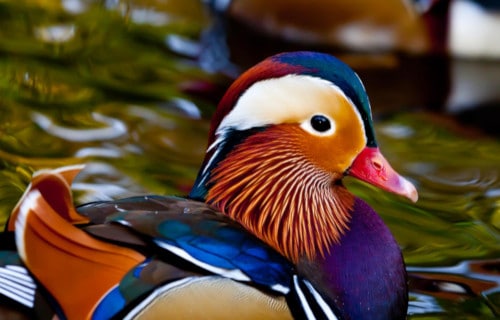
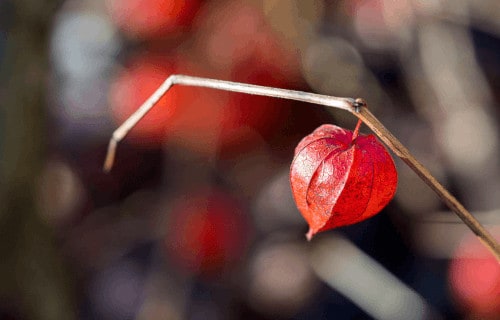
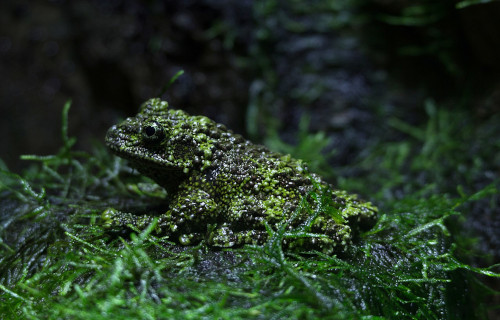
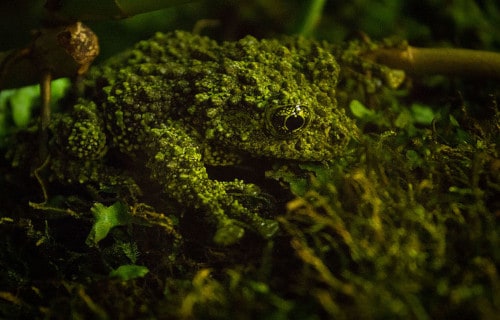

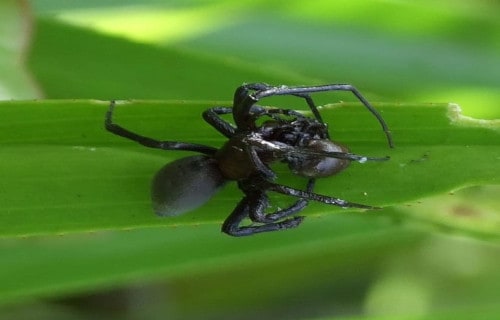
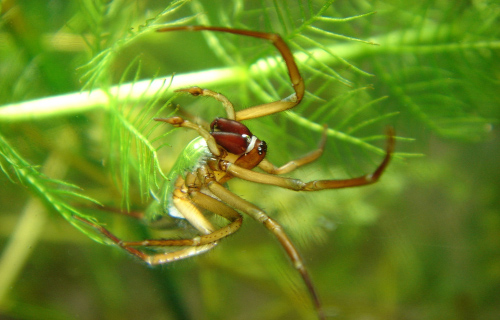
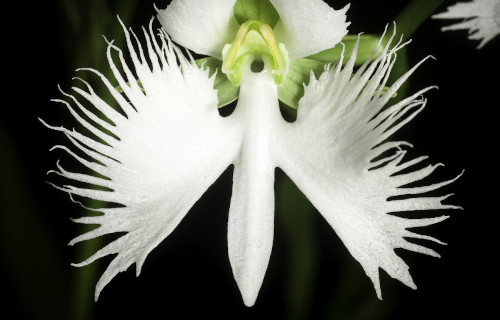
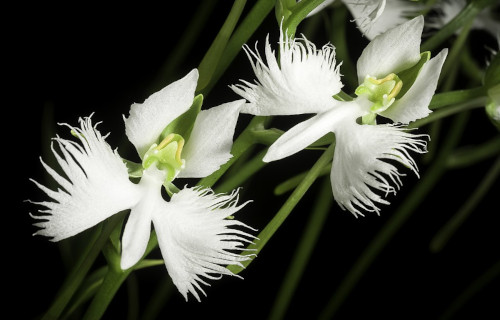
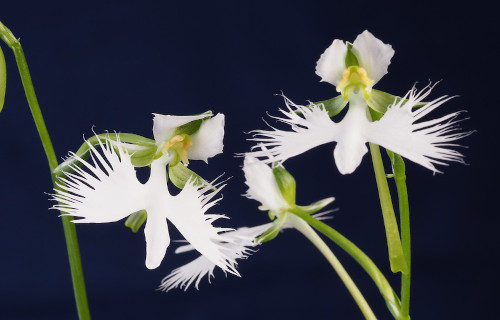
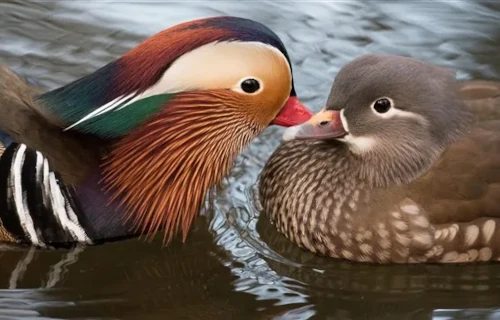
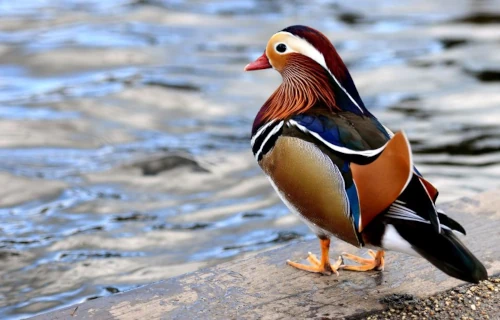
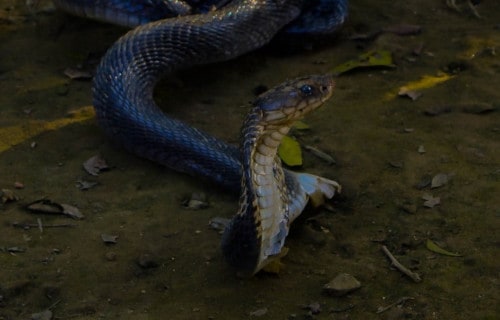
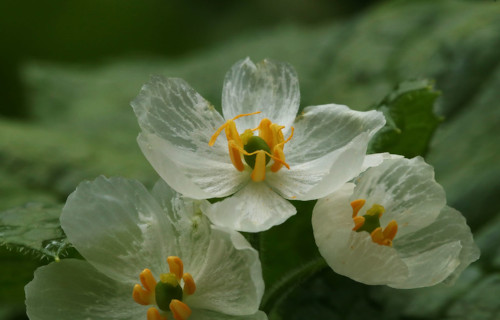
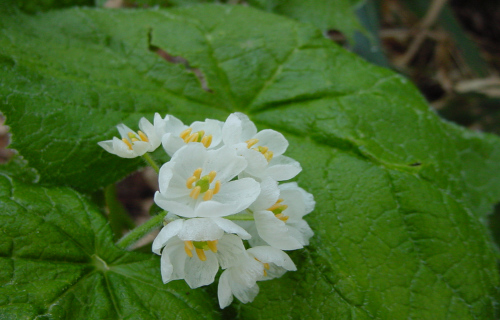
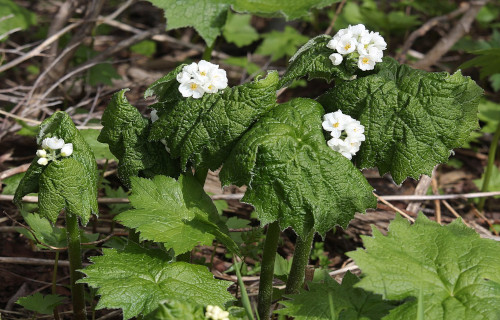
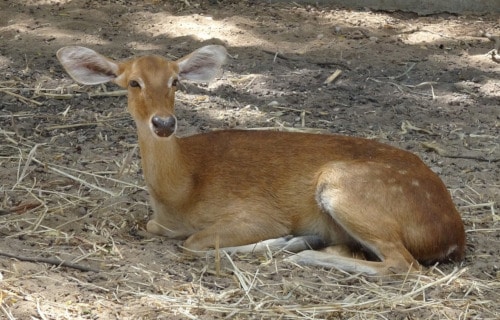
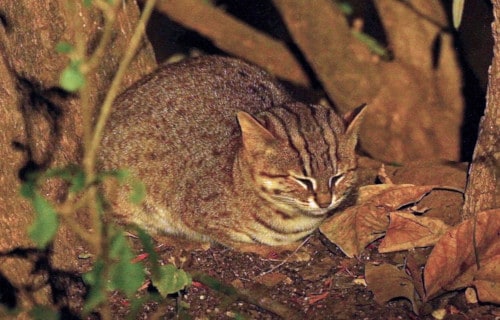
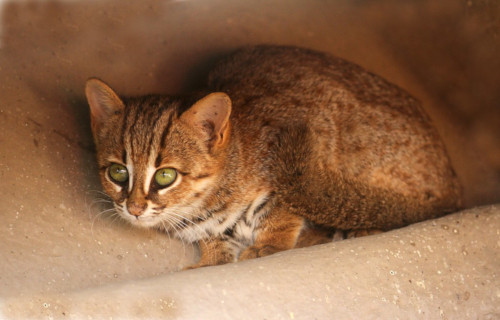
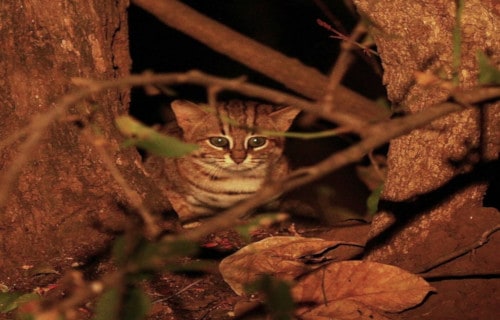









Leave a Reply